| 1 |
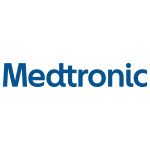 |
Barrett’s Esophagus Eradication using Radiofrequency ablation
Andre Martin & Bernard Nehme
Barrett’s Esophagus is the primary risk factor for esophageal cancer, a lethal cancer with a very low 5-year survival rate of only 14%. In Canada, around 800,000 people live with Barrett’s esophagus and this number is due to increase because of population lifestyle and eating habits. Many Canadian institutions are now performing a minimally invasive procedure to safely eradicate Barrett’s Esophagus.
During this session, attendees will deepen their knowledge on Barrett’s Esophagus, learn how Medtronic Barrx RFA technology works, and what the nursing team involvement is during the endoscopic procedure.
At the end of this course, participants will be able to:
- Define Barrett’s Esophagus
- Describe the RFA treatment for Barrett’s Esophagus
- Describe the nursing team involvement during an RFA procedure
|
Pippy 1 |
| 2 |
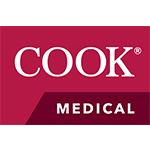 |
Metal Stenting and Hemostasis
Tony Ranucci, Andre Amirault, Nick Colwell
Join us for some hands-on education. With the aid of GI models, you will review the process of deploying a metal stent allowing you to become more comfortable with both the product and procedure. In addition, we will be discussing hemostasis and our exclusive product Hemospray. Finally, you will have access to Dr. Lawrence Hookey and the Cook Medical team who will be available to answer any of your questions.An overview of stenting in the GI tract, including biliary, esophageal, duodenal, and colonic stents.
At the end of the session, participants will be able to:
- List three common indications for enteral stenting
- Describe two benefits and drawbacks of covered and uncovered stents
- List two contraindications to stenting
- Gain confidence in metal stenting through hands-on education.
- Obtain additional knowledge on hemospray and the direction it is going in the future.
|
Pippy 2 |
| 3 |
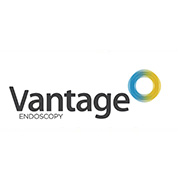 |
Principals of Modern Electrosurgery: Polypectomy
Santino Beninato, Regional Sales Manager - Central and Atlantic Canada
The overarching theme of this session will be that the use of the appropriate tools and techniques is important for minimizing the risk of complications associated with polypectomy, as well as recurrence in residual lesion rates. Information specific to the role voltage, current, and impedance serves in administering power toward a therapeutic effect within a dynamic anatomy will be emphasized. Understanding these principles within the framework of differing waveforms used to create different tissue effects cutting / coagulation will better enable staff to make informed decisions regarding ESU settings, accessory selection and duration of the therapeutic effect. No instructional program concerning electrosurgical devices is complete without a discussion of safety. This component will review the basic principles of safe use including discussion of: pad placement, grounding principles, alarms and error handling, monopolar vs. bipolar circuits, pacemakers.
At the end of the session, participants will be able to:
- Identify principals for safely performing electrosurgery
- Minimize risk and complications during a polypectomy
- Understand common program settings in an electrosurgical unit
Santino has over 6-years’ experience working in hospitals in a sales/support/educational capacity - with most of his experience having taken place directly in the endoscopy environment. He has facilitated training within hospitals, live courses, as well as for national organization conferences (e.g. CAGS and CSGNA). For Santino, electrosurgery is a passion and he truly enjoys working shoulder-to-shoulder with clinicians. Santino is an Erbe Certified Trainer and has personally lead the Erbe Certification Course for users on a national level and he feels strongly that Electrosurgery is one of, if not the most important modality related to Endoscopy. At Vantage, Santino also has the benefit of working to support many additional modalities like; Sandhill Manometry, M.I. Tech Metal Stents, U.S. Endoscopy, RUHOF Enzymatics, and Fujifilm Endoscopes – to name a few.
Colin has over 17 years of experience in Electrosurgery, in various surgical settings GI, OR, UROLOGY & GYNECOLOGY, has been consulted nationally on several electrosurgical incidents, has facilitated hands electrosurgery labs for physicians clinical teams, provided educational content for & lectured at several conferences. |
Bowring 4/2 |
| 4 |
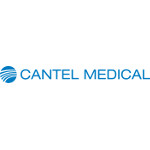 |
Infection Prevention Assessment in Endoscope Reprocessing
Jean-Francois Bourbeau & Steven Bate
The impact of infection prevention in endoscopy is significant, and the risks and associated costs of doing it wrong are huge. Flexible endoscopes are used in the most contaminated cavities in the body. They are complex devices that are difficult to clean; the cleaning has many steps which cumulatively make the scope safe for use.
This session will share study results and review Cantel’s Infection Prevention Assessment Chart that shows how an endoscope can become contaminated through inappropriate handling, transport and usage. It will assess the microbes log and risk of contamination in all 12 stages in endoscope reprocessing; starting from the endoscopic procedure room through various stages in reprocessing and eventually to the next patient.
At the end of the session, participants will be able to:
- Assess the microbes log and risk of contamination in all 12 stages in endoscope reprocessing; starting from the endoscopic procedure room through various stages in reprocessing and eventually to the next patient.
- Learn and recognize the risk of contamination that is associated with all the steps that an endoscope goes through and ways to prevent infection.
Cantel is a global company dedicated to delivering innovative infection prevention products and services for patients, caregivers, and other healthcare providers, which improve outcomes and help save lives. Cantel’s Medical Business Unit delivers a Complete Circle of Protection through a comprehensive offering in two critical areas: endoscope reprocessing and endoscopy procedure products. |
Exhibit Hall |
| 5 |
 |
Introduction to Capnography and Waveforms
Ted Macdonald, Cheryl Ha, Eliana Landori
The Capnography workshop offers an overview of the basic principles of capnography. Understanding the range of normal values, or capnometry, in conjunction with interpreting etCO2 waveforms, or capnography, is integral in assessing the quality of patient ventilation for the non-intubated patient receiving procedural sedation.
At the end of the session, participants will be able to:
- Describe the basic physiology of capnography and waveforms
- Identify normal and abnormal waveforms
- Interpret the data provided by capnographic waveforms
Educational Topics - Ventilation monitoring, capnography, procedural sedation
Target Audience - Any nurse involved in the care of a patient during the administration of sedative agents during endoscopy procedures |
Victoria 1 |
| 6 |
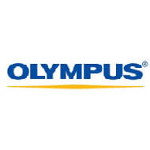 |
Knowledge Exchange: Connect, Communicate, Decide
Kevin Morin, Integration Consultant
Managing equipment, cleaning and disinfecting endoscopes, and leading professional endoscopy teams has become more complex. This requires staff supervisors, infection prevention champions and department managers to have greater visibility into the utilization, cleaning, reprocessing and storage of the flexible endoscopes in their endoscopy unit. Olympus will preview solutions for Reprocessing Documentation, Image Capturing and Asset Management System. The KE data architecture makes merging patient, procedural and reprocessing records possible. By merging this disparate data together, this software solution allows users to demonstrate compliance with regulatory and accreditation agency standards and helps facilities meet the triple aim of healthcare:
1. Increased Quality of Care
2. Decreased Costs
3. Enhanced Patient Satisfaction
Olympus is a global technology leader, crafting innovative optical and digital solutions in medical technologies; life sciences; industrial solutions; and cameras and audio products. Throughout our 100-year history, Olympus has focused on being true to society and making people’s lives healthier, safer and more fulfilling. Our Medical Business works with health care professionals to combine our innovative capabilities in medical technology, therapeutic intervention, and precision manufacturing with their skills to deliver diagnostic, therapeutic and minimally invasive procedures to improve clinical outcomes, reduce overall costs and enhance quality of life for patients. Visit the Olympus booth to view these technologies and more. Olympus…True To You. True To Society. True To LIFE. |
Victoria 2 |
| 7 |
 |
Novel submucosal injection agent
Dr. Daniel Von Reteln
Presentation of a new submucosal injectable composition is intended for use in gastrointestinal endoscopic procedures for submucosal lift of polyps, adenomas or other gastrointestinal mucosal lesions, prior to excision with a snare or endoscopic device.
At the end of the sessions, participants will be able to:
- Highlight significant risk factors exist for incomplete resections
- Describe the limitations of widely used injection agents
- List the properties of an optimal submucosal injection agent
|
Victoria 3 |
| 8 |
 |
Benefits of Cold Snaring, Prophylactic Clipping to Prevent Post Polypectomy Bleeding, & Novel Techniques for Management of Pancreatic Fluid Collections
Steve Crowe, Drew Kuzminski
A brief summary will be provided to all participants on the following :
- Why cold snaring provides an optimum specimen.
- Which patients may benefit from a clip used prophylactically
- Alternate patient management methods for pancreatic pseudocysts
At the end of the session, participants will be able to:
- Summarize the benefits of cold snaring
- Explain the reasons for when to apply a clip prophylactically.
- Discuss new interventions to drive improved outcomes in management of pancreatic pseudocyst patients
Stephen Crowe is from London Ontario and is a Regional Director of Sales with Boston Scientific. He has been with the company for almost 19 years and aside from providing positive input for the challenging day to day procedures, has been afforded the opportunity to attend many Endoscopy courses and conferences both nationally and internationally. |
Battery |
| 9 |
 |
Storage Wars: Endoscope Storage & Drying Cabinets
James Michener
At the end of the session, the participants will be able to:
- Better interpret the current CSA standards around Endoscope Storage
- Differentiate between HEPA filtration positive air and HEPA filtration for channel purge features
- Describe the Hang time tracking feature and its function and how it assists with compliance
Endoscope Storage CSA requirements have changed over the years and this presentation will highlight these changes. This will showcase the features and benefits of current technology and how these storage solutions aid in your Endo departments compliancy. Review what HEPA filtration is and why it is important for Endoscope Storage.
James Michener is the Territory Manager for Infection prevention technologies with STERIS Canada. James resides in Stouffville Ontario, responsible for the Ontario East territory, covering the GTA east to the Quebec boarder and Northern Ontario up to Moose Factory. James has developed to be a team leader within STERIS for their endoscope storage solutions. He loves what he does as there are no two days the same. James assists hospital and clinical staff stay up-to-date with technology and education to ensure patient safety through Medical Device Reprocessing.
|
Wishingwell |













